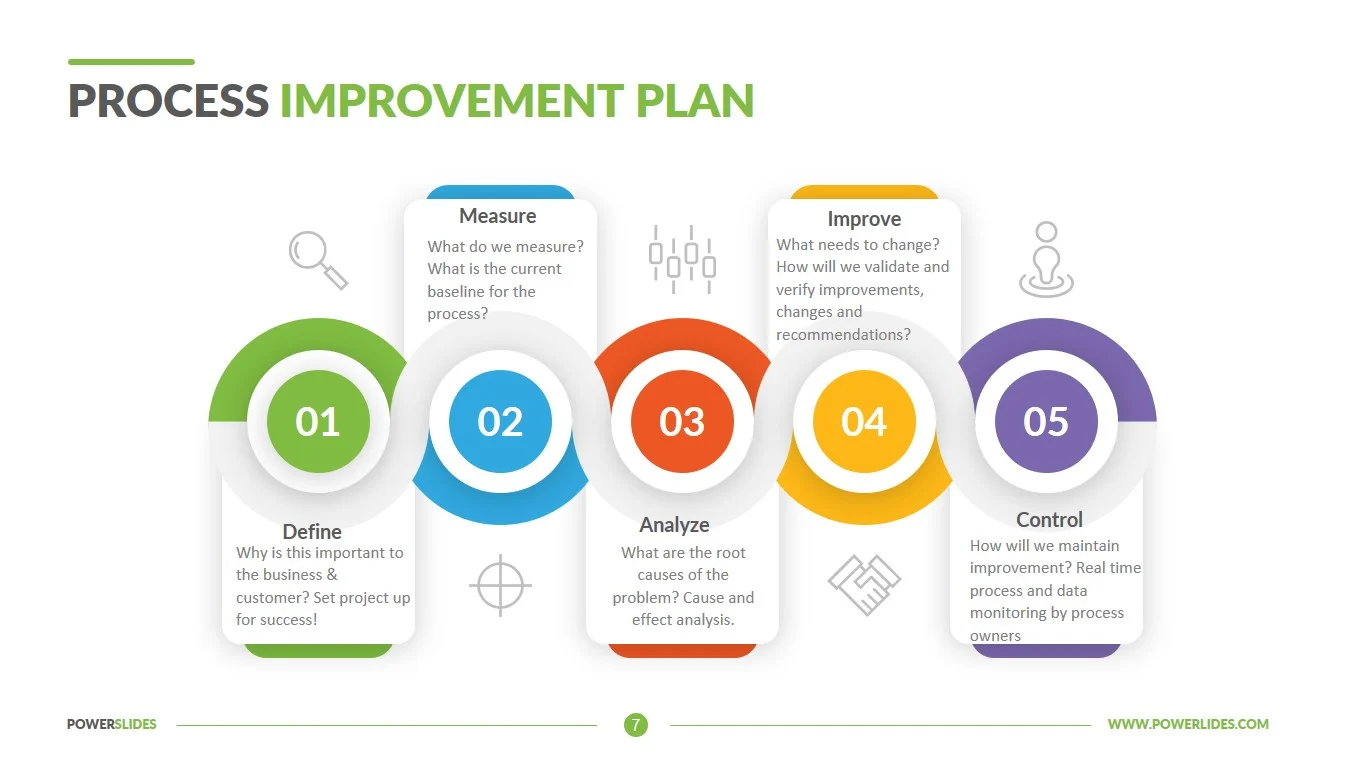Change is inevitable, right? It's not just something we deal with; it’s a driving force behind innovation and improvement. This adage rings especially true when we talk about IT environments where the rapid pace of technological improvements and the increasing complexity of IT environments underscore the necessity for an effective framework to manage change.
This is where ITIL Change Management comes into play.

Managing change within IT goes beyond just rolling out new technologies or system updates. It's about aligning IT processes with the broader business goals, transforming IT’s function from mere support to a central driver of business transformation. However, mastering ITIL Change Management is complex as it requires finding a proper balance between people, processes, and technology.
Finding this balance starts with defining what 'change' means for your organization. Change could be as simple as a small software update or as complex as a major system overhaul. Regardless, when looking at implementing change within your business, you should be able to clearly answer the following three questions:
- Why are we making this change? Understanding the motivations behind the proposed change and the intended business outcomes is essential.
- What exactly are we changing? Pinpointing the specific components—be it hardware, software, or processes—that will be changed.
- What's the impact of the proposed change? Evaluating the potential implications, risks, and benefits, ensuring the change is harmonious with the overall IT ecosystem.
Answering these questions will allow you to lay a solid foundation for making informed, strategic decisions that align your changes with your organization's goals.
While the thought of implementing these changes might seem overwhelming, approaching it with the right strategy can make the process manageable and even straightforward which is what this blog post aims to help you with.
What is ITIL Change Management
ITIL Change Management is a structured framework to help organizations navigate changes efficiently and with minimal disruption. Additionally, it ensures that all changes to the IT infrastructure are conducted using standardized methods and procedures, which are crucial for maintaining a high-quality service level.
At its core, ITIL Change Management aims to:
- Control the Lifecycle of Changes: This includes everything from the initial request to the final implementation and review of changes. The goal is to ensure that each change is assessed, approved, implemented, and reviewed in a controlled manner.
- Minimize Risk: Change inherently carries risk, particularly in complex IT environments. ITIL Change Management seeks to identify potential risks early and propose ways to mitigate them effectively.
- Maximize Value: By ensuring changes are aligned with business objectives, ITIL Change Management helps in delivering maximum value from IT investments and initiatives.
- Facilitate Efficient and Rapid Deployment: The framework ensures that changes are implemented quickly, yet without sacrificing quality or disrupting ongoing services.
- Support Continuous Improvement: Every change is a learning opportunity. Post-implementation reviews are integral to the ITIL Change Management process, providing valuable feedback and insights that fuel continuous improvement and innovation within IT operations.
Types of Changes in ITIL
ITIL's framework is designed to categorize changes in a way that helps organizations manage the change management process efficiently. These categories are differentiated by their level of risk, impact, and the complexity of the procedures involved.
Although ITIL Framework 4 traditionally identifies three main categories of change (Standard, Normal, and Emergency) the flexibility of the framework supports the customization to include additional types, ensuring a better fit for specific organizational contexts.
In this context, we've expanded our discussion to include five types of changes (Standard, Minor, Normal, Major, and Emergency) to provide a more comprehensive overview.
Regardless of what framework you use, understanding these types of changes, along with their specific risks and impacts, is crucial for effective change management.
Here's an expanded look at five types of changes, which together provide a broader understanding of the spectrum of changes managed in ITIL:
1. Standard Changes (Pre-Approved Change)
Often pre-approved, these are low-risk, relatively common changes that follow a procedure with predictable outcomes. Examples include routine updates or patches. Because of their low-risk nature, they require minimal oversight and are typically fast-tracked in the change management process.
2. Minor Changes
These changes are relatively low risk but may not be as routine as standard changes. They still require oversight but are usually handled through streamlined procedures. Even though Minor changes are managed more swiftly, they typically involve submitting a Request for Change (RFC) to ensure that every alteration is documented and processed in alignment with ITIL principles. However, the review and approval process is simplified compared to more significant changes. It's often the case that the change manager primarily handles the planning and approval for these changes, without needing to convene the full Change Advisory Board (CAB).
3. Normal Changes
This category represents the bulk of changes and involves a full and thorough assessment. Normal changes carry a moderate level of risk and impact and require comprehensive planning and approval processes. They are the standard changes most IT departments will regularly encounter. Typically, these changes also necessitate convening the change advisory board to ensure that all aspects of the change are evaluated and appropriately managed before implementation.
4. Major Changes
These are high-impact and high-risk changes that necessitate detailed assessment and planning. They might include significant system overhauls or the integration of new technologies. Major changes require extensive testing, stakeholder engagement, and robust back-out plans in case the change implementation fails.
5. Emergency Changes
As the name suggests, these changes need to be implemented urgently to resolve an incident or address a critical issue that poses a high risk to parts of the organization. Emergency changes are expedited through the change management process, typically involving the Emergency Change Advisory Board (ECAB) to ensure fast and effective decision-making. Despite the urgency, these changes still require a post-implementation review to ensure they have been executed correctly and to facilitate learning from the incident.
Note: In categorizing changes, it's best to err on the side of caution. Changes with unknown risks should be mapped to a higher level in the change model to ensure a thorough assessment. The evaluation stage at the end of the process helps determine if the change can be categorized differently in future instances for more efficient management.
The Change Management Process Flow in ITIL
As we delve into the Change Management Process Flow, starting from Change Initiation to the final Review & Closure, it's crucial to recognize the importance of a structured and controlled approach. Managing changes in ITIL involves several key stages, each requiring careful consideration and detailed planning. This structured approach is vital to ensure that changes are implemented efficiently and effectively, with minimal risk.
In this context, understanding the change control process becomes essential. Change control is an integral part of managing any change in a project or operation. It involves a systematic process of identifying, documenting, approving, or rejecting, and then implementing changes. This ensures that changes are not made without due consideration, and all impacts are carefully analyzed.
Let's now take a deeper look into these steps, each of which builds on the principles of controlled change management to ensure effective and efficient implementation.
1. Request for Change
The journey of change management in ITIL begins with a Request for Change (RFC). This step is crucial as it sets the foundation for the proposed change. The RFC must be detailed, clearly articulating what the change entails and the rationale behind it.
This step involves logging each RFC with a unique identifier, ensuring all necessary information is captured. This systematic recording of RFCs is a critical first step as recommended by ITIL, setting the stage for subsequent evaluation and planning.
Best Practices:
- Implement an intuitive portal for stakeholders and IT staff to easily submit RFCs.
- Ensure the portal provides a template for detailing risks, implementation plans, and affected systems for comprehensive context.
- Encourage collaboration between development teams and IT teams on the platform for full transparency.
2. Change Evaluation & Planning
Once an RFC is submitted, it undergoes a thorough evaluation and planning phase. The Change Manager performs an initial review, scrutinizing the RFC to determine if it is valid, specific, beneficial, feasible, and necessary. Following this, the Change Advisory Board (CAB), comprising various departmental representatives, assesses the change in terms of costs, benefits, and risks.
A comprehensive plan, including a back-out procedure in case of failure, is then developed. ITIL emphasizes the importance of this detailed assessment phase to ensure the success and viability of the proposed change.
Best Practices:
- Utilize automation tools to pre-screen and categorize RFCs based on predefined criteria.
- Conduct initial reviews collaboratively, involving relevant stakeholders for a more balanced evaluation.
- Develop detailed change plans that outline expected outcomes, resources, timelines, testing requirements, and rollback strategies.
3. Change Approval
After thorough assessment and planning, the change enters the approval stage. The Change Manager, armed with recommendations from the CAB, decides whether to authorize the change or escalate it for higher-level approval.
The type and potential impact of the change often dictate the level of authorization required. Once approved, the change is scheduled in the Forward Schedule of Changes (FSC), a critical tool for ensuring transparency and coordination across the organization.
Best Practices:
- Streamline the approval process with clear guidelines on who can approve what types of changes.
- For complex changes, consider implementing a peer review system for additional scrutiny.
- Maintain a digital trail of approvals for audit purposes and future reference.
4. Change Implementation
Implementing the change is a coordinated effort. The Change Manager oversees the execution of the change plan, ensuring that all actions, including building, testing, and actual implementation, align with the agreed-upon schedule.
A crucial aspect of this stage is the back-out plan, a contingency to revert to a stable state should the change not go as planned. Rigorous testing of the change and the back-out plan in a controlled environment is vital to mitigate risks associated with the implementation.
Best Practices:
- Employ workflow automation to manage and track the progress of the change implementation.
- Ensure that the change implementation process is well-documented, with clear procedures and results.
- Regularly update all stakeholders on the progress and any deviations from the plan.
5. Review & Closure
The final stage involves reviewing and closing the change. A Post Implementation Review (PIR) is conducted to evaluate the effectiveness of the change. This review assesses whether the change met its objectives, remained within budget, and had any unintended consequences.
The PIR is a pivotal moment for learning and continuous improvement, allowing insights gained to be fed back into the change management process, enhancing its future efficiency and effectiveness.
Best Practices:
- Conduct a comprehensive Post Implementation Review to assess the success and learn from the change process.
- Document lessons learned and best practices in a knowledge base for future reference.
- Consider opportunities for automating similar change requests in the future to increase efficiency.
Embedding Continuous Improvement and Communication in ITIL Change Management
While the change management process flow concludes with review & closure, it's important to emphasize the role of continuous improvement and effective communication throughout the process.
- Continuous Improvement: An integral part of the evaluation stage is the focus on continuous improvement. The insights gained from each change, particularly during the Post Implementation Review (PIR), should be used to refine and enhance the change management process. This approach ensures that the process evolves over time, becoming more efficient and effective in handling future changes.
- Effective Communication: The success of change management is also heavily dependent on effective communication. Communicating the details and benefits of the change management process to both IT staff and the broader business is crucial. This transparency improves understanding across the organization and reduces the incidence of unauthorized changes, which can disrupt the carefully managed IT ecosystem.
- Utilizing Tools: Lastly, leveraging the right change management software is essential for managing the change process. Tools for logging RFCs, managing workflow, and supporting impact assessment are critical for most organizations. These tools not only streamline the process but also provide the necessary oversight and control to manage changes effectively.
Incorporating these elements into the change management framework aligns with ITIL's focus on a holistic and disciplined approach to managing IT changes. By embedding continuous improvement, effective communication, and the right tools, organizations can ensure a robust and responsive change management process, capable of adapting to the evolving needs of the IT landscape.
Roles and Responsibilities
In the context of ITIL Change Management, various roles are essential to ensure a smooth and effective change process. Let’s discuss these roles, drawing from the provided information and ITIL best practices:
1. Change Manager
The Change Manager is pivotal in the change management process. This role is challenging, especially in the initial stages of implementation, and requires a person who is organized, communicative, and decisive.
In smaller organizations, this role might be assumed by the Problem Manager or Configuration Manager, though this can bring certain risks, especially when the same person is responsible for changes and updating the CMDB. In larger organizations, the role might be more structured, often with a steering group and a change leader who has the final say in authorizations.
The Change Manager's responsibilities are broad, encompassing the review of RFCs, scheduling CAB meetings, authorizing changes, and coordinating their implementation. This role is crucial in ensuring that changes are managed effectively and align with organizational goals.
2. Change Initiator/Requestor
The Change Initiator or Requestor is the person who identifies the need for a change and initiates the process by submitting an RFC. This role is fundamental in highlighting areas for improvement or addressing issues within the IT infrastructure. The Requestor provides detailed information about the proposed change, including its purpose and the benefits it aims to achieve.
3. Change Agent
The Change Agent is typically someone who implements the change. This role could be an IT professional or a team responsible for executing the change as per the plan approved by the Change Manager and CAB. They ensure that the change is implemented smoothly and effectively, adhering to the guidelines and procedures outlined.
4. Change Advisory Board (CAB)
The CAB plays a critical role in assessing and recommending changes. Composed of members from various departments, including IT operations, development, and business units, the CAB evaluates each change from different perspectives. Their responsibility includes making recommendations on the impact, planning, and approval of changes.
Within the CAB, there is a subset known as the Emergency Change Advisory Board (ECAB), which handles urgent changes that require immediate attention. The ECAB makes quick decisions in emergencies, ensuring that critical issues are resolved promptly.
5. Change Approver
The Change Approver is responsible for formally authorizing changes. This role varies depending on the change's nature, scale, and potential impact. For standard and minor changes, the approver might be the Change Manager or the requestor's line manager. For more significant changes, the approver could be higher management or even the board of directors. They ensure that each change is scrutinized and approved appropriately, aligning with organizational objectives and minimizing risk.
Each of these roles is integral to the ITIL Change Management process, contributing to a structured and effective approach to managing changes in the IT infrastructure and services. By clearly defining and assigning these roles, organizations can ensure that changes are handled efficiently, with minimized risk and maximized benefits.
Knowledge Management in ITIL Change Management
Knowledge management in ITIL Change Management focuses on the systematic capture and dissemination of knowledge. This process is crucial for learning from past experiences and making informed decisions in future changes.
The first step is setting up a centralized knowledge base. This platform serves as a repository for all information related to change management. Here, details of past changes, their outcomes, challenges faced, and lessons learned are stored. This repository acts as a single source of truth for teams to understand the impacts and results of past changes, facilitating better decision-making for future changes.
Crucial to this setup is the development and documentation of standard operating procedures (SOPs). These SOPs should be detailed and stored within the knowledge base, providing clear instructions for handling common types of changes. The objective here is to ensure consistency in how changes are managed across the organization, irrespective of the team or individual involved. Creating specific SOP templates can help in standardizing responses to common scenarios, reducing the likelihood of errors and inefficiencies.
Finally, the knowledge base should not be static. Regular updates are essential to keep it relevant and useful. New insights, information from recent changes, and evolving best practices should be continuously added. Assigning specific responsibility for updating and managing this knowledge base ensures that it remains a living document, evolving in line with the organization's experiences and needs in change management.
Incorporating knowledge management in this manner ensures that the organization does not just react to changes but learns from them, building a culture of continuous improvement and informed decision-making in ITIL Change Management.
Embracing ITIL Change Management for Future-Ready ITSM
Change management is essential not just for operational improvement but also for aligning IT strategies with broader business objectives. The principles of ITIL Change Management provide a reliable framework for navigating new challenges and leveraging opportunities.
The addition of knowledge management and a knowledge base to this framework reinforces the importance of continuous learning and decision-making based on shared knowledge. This approach helps in building a knowledgeable and adaptable IT team, ready to handle the complexities of modern IT environments.
To further support your ITIL Change Management processes, consider a 14-day free trial of our knowledge base software. Our software can significantly help simplify the documentation, sharing, and management of organizational knowledge, making it an invaluable tool for ITIL Change Management.






